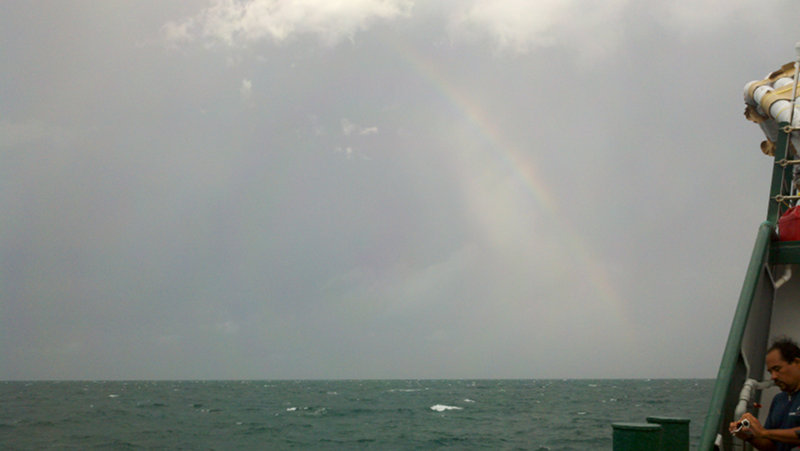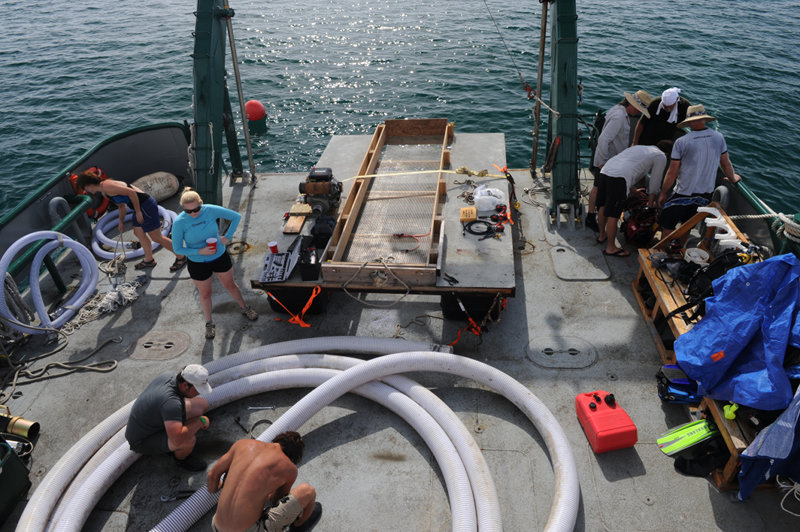
By Kim Smith, Web Coordinator
July 22, 2012
July 22nd proved to be a testing day. In all, we completed a total of four dives (three scientific and one anchor related). Initial probing of our excavation area indicated the sand deposit was very thin above the bedrock so we decided to move our excavation loci. We are still at the Brownstone site, but have identified new square meters to excavate in search of submerged cultural resources. The first dive focused on identifying new areas and marking their location, the location of the current datum post, and the old 100 foot (ft) dredge hosed left behind last year. Between the first and second dives, our crew members from Valeo Films arrived ready to photodocument and film the research expedition. The second dive, incorporating our new crew members, was very successful. We relocated our excavation unit to the 2011 Unit 1 with the highest quality knappable stone we have seen anywhere offshore.

David Ulloa records video while a rainbow breaks through the clouds behind him. Image courtesy of Exploring the Submerged New World 2012 Expedition, NOAA-OER. Download larger version (jpg, 3.0 MB).

A view of Weatherbird II's stern, showing the floating dock and dredge hose undergoing repairs. Image courtesy of Exploring the Submerged New World 2012 Expedition, NOAA-OER. Download larger version (jpg, 6.0 MB).
Once all preparatory tasks were completed by divers and snorkelers, the crew of the Weatherbird positioned the ship to retrieve the floating dock via the pulley system on the stern. This is where dive 3 came in, where the divers assisted in the recovery of the stern anchor by clipping a line to it. The apparatus was placed on the deck of the ship for minor repairs to the dredge engine, and the new hose for this year and the old hose newly recovered were combined for a near 200 ft length. Unfortunately, the bulk of the day was utilized completing these tasks and prepping for Monday. To limit the time consumption in redeploying the floating dock, it will now stay on the deck of the ship with the dredge materials screened while on the Weatherbird. Excavations will commence at dawn tomorrow morning. This both limits the time needed to deploy our gear and places it on the more stable ship deck allowing us to continue working in somewhat rougher seas.